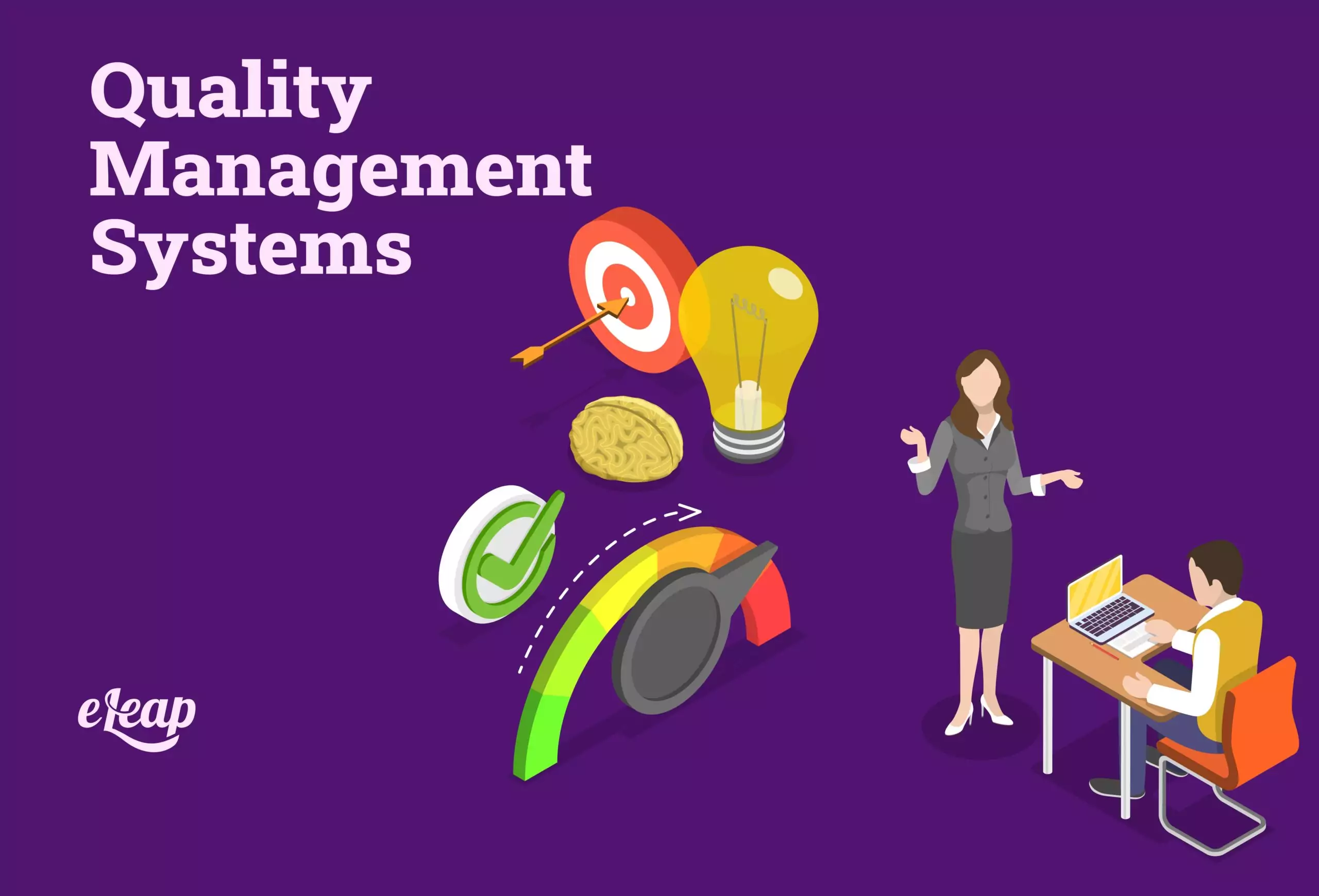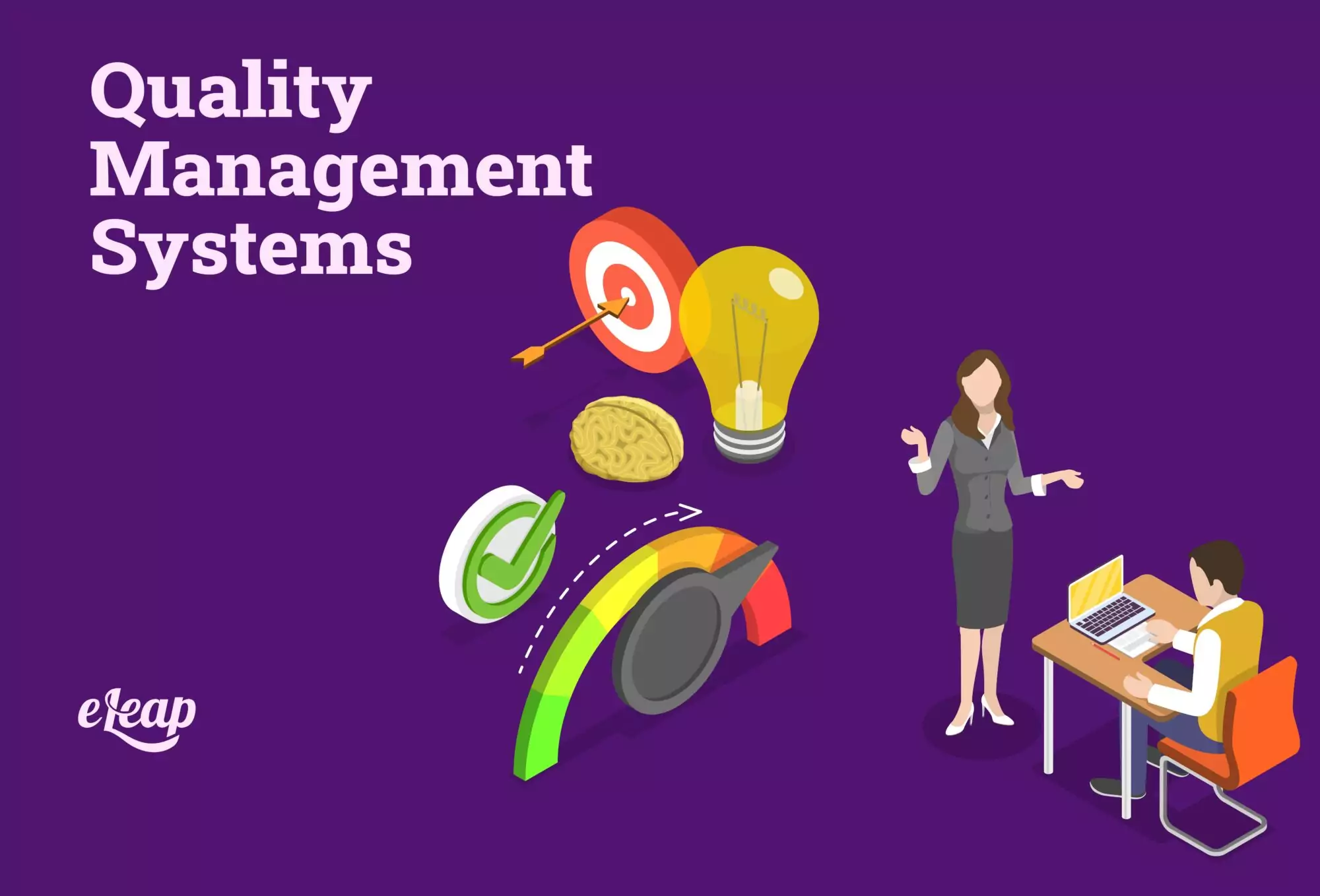Quality Management Systems
Quality is a differentiator. Use a quality management system (QMS) to get results

When it comes to running your business, there can be a lot of moving parts and elements to keep track of. In addition to those sorts of headache-inducing elements, you also have to make sure that whatever you’re making is of a high enough quality to satisfy your customer.

However, if you’re a business with many different types of items and many different customers, what does it mean to make a product that is of high enough value? Especially when “high enough” is an objective term that might mean different things to different people?
That’s where quality management systems come in. If you haven’t heard of them, this article is going to help demystify them for you.
A quality management system is a system that documents the policies, business processes, and procedures necessary for an organization to create and deliver its products or services to its customers.
By doing it in this specific way and with this specific process backing their organization, a business can increase customer satisfaction through high product quality.
If you want to describe it differently, quality management systems help a company, business, or organization meet its specific and promised requirements and also those requirements that are necessary to make their customers happy.
Businesses and organizations do this by making sure to make continuous improvements to their operations.
Quality Management Systems in More Detail
As mentioned previously, a quality management system is meant to help improve processes in businesses to make sure that a business or company is constantly improving and trying to have constant customer satisfaction.
But that’s quite vague, and it can be hard to wrap your mind around. As such, this article is going to break it down further for you.
A Quality Management System seeks to:
- Recognize interested party requirements including Licenses to Trade, guidelines, customer requirements, and the chosen management system standard(s)
- Ensure that all requirements have been met
- Confirm that employees receive applicable training in the quality system requirements.
- Determine processes, their interaction, inputs, and outputs
- Produce records or evidence that system requirements have been met
- Measure, monitor, and report the performance of the quality management system(s)
- Plan changes to the quality management system and take actions to address risks and opportunities as a result of changes
- Perform an internal audit to analyze the quality management system and correct nonconformities
- Continually improve the quality management systems(s)
In summary, a quality management system is a specific, necessary element of a business that requires the organization to constantly check and make sure that all of its products are being held to a high, consistent standard.
What A Quality Management System Is Not
A quality management system is not a waste of your time. It is not a waste of your money. It is not a waste of resources! A quality management system isn’t meant to be a difficult thing.
It’s meant to create a system that is repeatable, measurable, and constantly improving. To have a successful quality management system, you must provide documented information such as procedures, work instructions, policies, and forms to those people who will be performing the duties of the process. Make sure that you give them clear directions and step-by-step instructions.
In its most basic form, a quality management system is an integrative element, uniting diverse aspects of a company into a unified purpose of delivering products/services in their best form. Rather than viewing a quality management system as a time- or money-sink, realize that it is a key component of success.
To ensure success, quality management systems prioritize:
- The customer or consumer of the good or service
- Providing that customer with the best value possible
- Continuous improvement programs, which implies that there is not a “perfect” state no matter how close to it your business might get
- An efficiency imperative that says waste must be reduced and all resources maximized
- Top management should support and provide adequate resources to achieve goals
- Aids or facilitates a clear understanding of expectations between all participants
- The incorporation of measurement and accurate data to support data-driven decision making
- Documentation of the quality management systems and their processes to make sure that everything is being maintained properly and controlled in specific and safe ways
Why Are Quality Management Systems Important?
When it comes to quality management systems, they have one main goal. That goal is to provide consistency to your customers/client base and to make sure that the product they receive is of the best quality.
You should be striving to prove to your customers that you know what you’re doing. Your clients will want to know what they can expect from your company, and then your company should be able to deliver on that expectation.
So long as you can promise to maintain that consistency and reassure them that your product will always be at that level of quality, this will allow you to maintain existing customers and also give you a reputation for quality and keeping your word. A good reputation is the best way to get more business and make more money!
A quality management system can also help you maintain specific compliance efforts. When it comes to these, you can have your system generate data that can then be used to analyze your organization.
You can use the metrics to look for any areas where compliance issues may arise. This data management can also help you when it comes time to do internal audits and when you might need to find ways to test the consistency and quality of your system.
Quality Management System Benefits
When it comes to quality management systems, there are numerous reasons to make sure that you’re using one and that your system works.
A quality management system organizes and centralizes your policies and makes sure that everything that you produce has the same level of quality.
Also, once you have a system in place that works and that also speaks to your continued level of maintained quality, you’ll have a better sense of how to train new employees.
Once you know how to get done what you want to be done—and make sure that it works exactly as promised—you’ll be able to tell new members to your team exactly what you want and how to get it done.
Having said that, a key necessity and benefit of the quality management systems is that of constant improvement. You have to make sure you’re constantly improving and not allowing your company to become stagnant.
If you don’t track customer satisfaction, it can be extremely hard to figure out which areas of your business need to be fixed and which places are fine as is. If you don’t know what’s lacking in your business, you can’t make it better!
With quality management systems, you can streamline and document your process to understand what changes you need to make in your organization and what you must do to increase the satisfaction of your clients.
If your customers are satisfied, you’ll have fewer complaints and fewer hits to your reputation. You’ll also have to spend less money to change everything in your organization as you chase product perfection.
How Do You Create and Implement a Quality Management System?
As with all things in business, it can be hard to know exactly what needs to be done for . . . anything.
Of course, establishing a QMS falls under this umbrella as well.
Before you can even get started with establishing the QMS, you have to make sure that you know what exactly your organization uses when it comes to processes.
You need to know which processes your company works with that have a direct effect on your customers’ satisfaction.
Once you’ve figured out which of these processes have a direct impact on the customer, you will have a starting point.
The QMS design needs to be influenced by the organization’s goal. You need to know what you want to do and how you want to do it.
Then, you can use the quality management system to figure out the best way to do it, do it well, and do it consistently.
Also, by having your goals laid out clearly, you’ll be able to pinpoint exactly which elements of your process aren’t working how you want them to work. You’ll be able to find a particular element and sequester it for improvement.
There are some basic steps you can follow when it comes to creating a quality management system:
- Design & Build = serve to develop the structure of a QMS, its processes, and plans for implementation
- Deploy = this works best for breaking each process down into subprocesses and educating staff on documentation, education, training tools, and metrics.
- Control and Measure = these happen and work for your benefit by routine, systematic audits of the quality management system. The specifics vary greatly from organization to organization depending on size, potential risk, and environmental impact.
- Review and Improve = detail how the results of an audit are handled. The goals are to determine the effectiveness and efficiency of each process toward its objectives, to communicate these findings to the employees, and to develop new best practices
- Design & Build
You’ll notice that “design” and “build” happen more than once. Additionally, this whole process is a cycle, one that you will use over and over again. The reason for this is that you are constantly reinventing the wheel when it comes to making sure that your business is doing its best work in the most consistent way possible.
So long as you make sure that the happiness of your client is paramount and that you’re going to keep trying to better your business and its processes, you will help your business succeed.